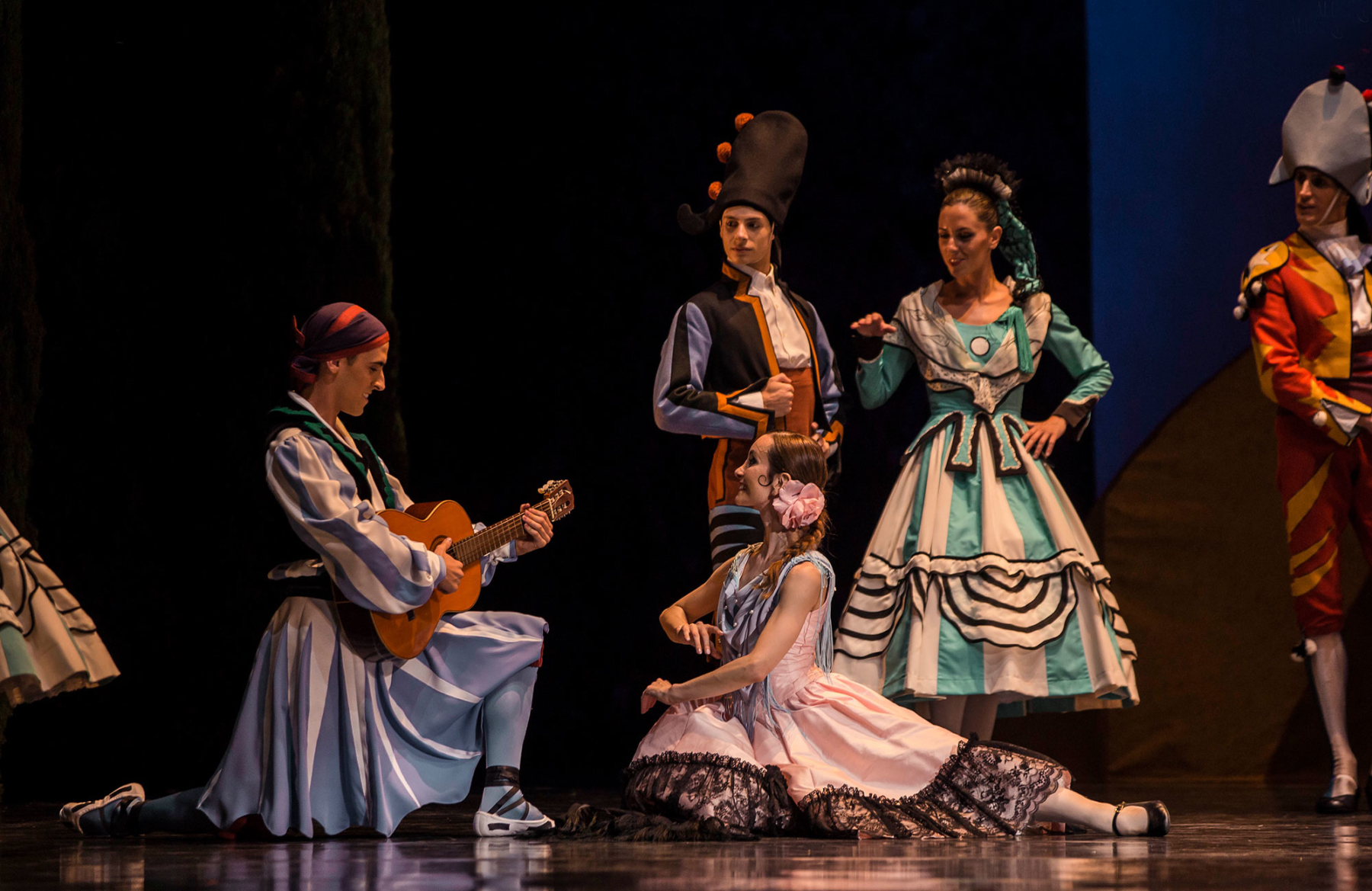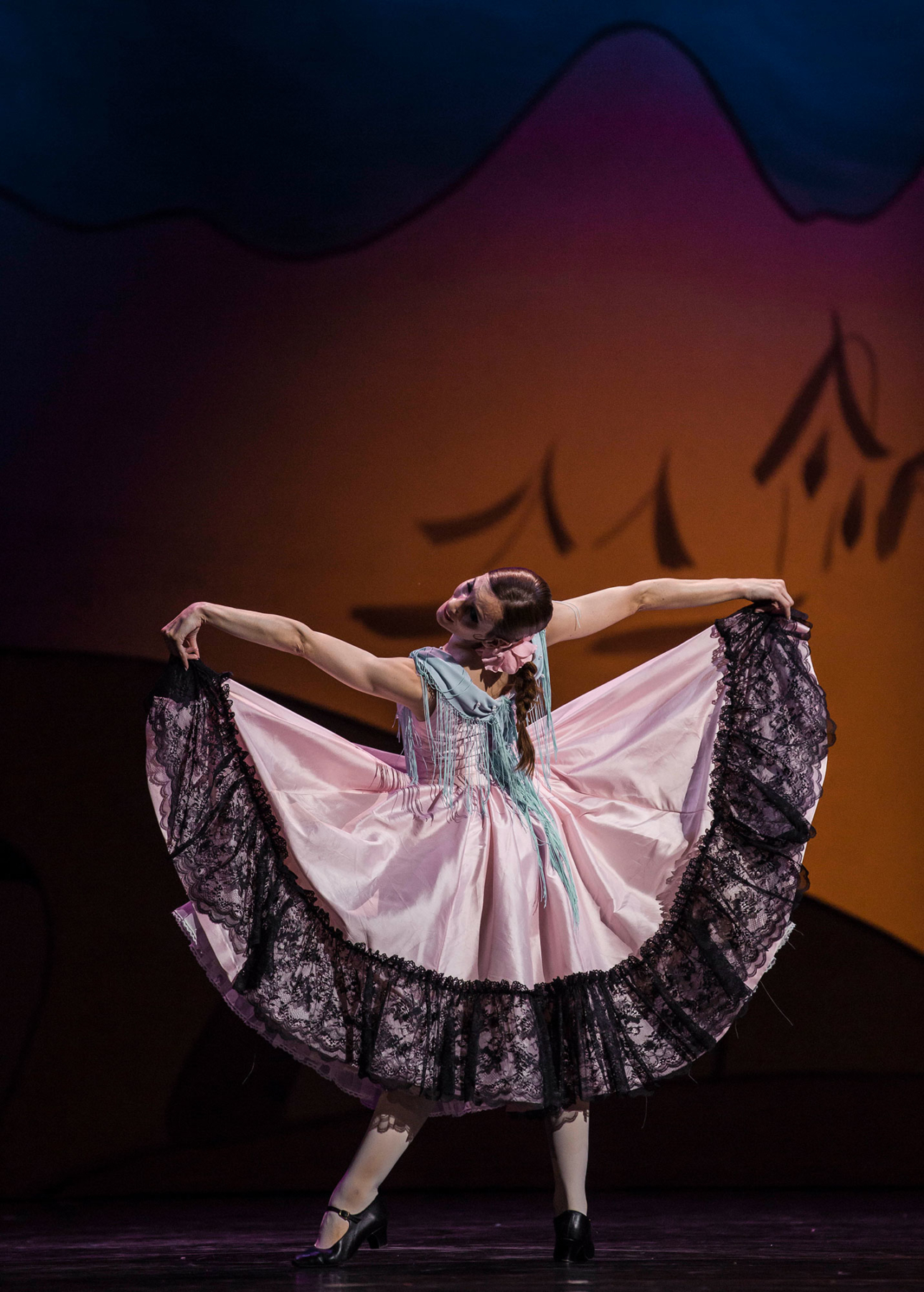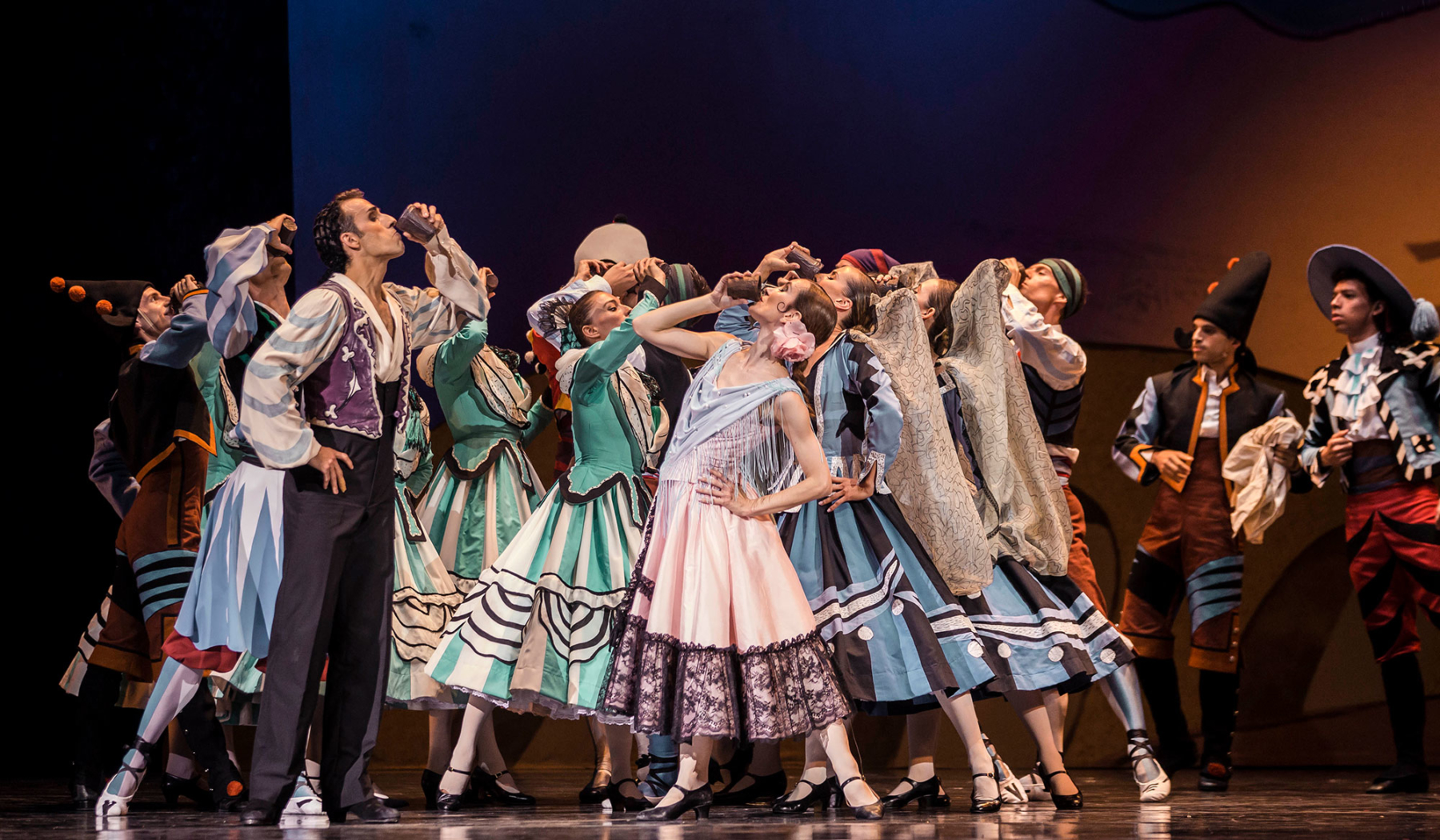Repertoire
El sombrero de tres picos
Three-Cornered Hat is a ballet with choreography by Léonide Massine and music by Manuel de Falla, based on the novel by the XIX centruy writer Pedro Antonio de Alarcón. It was premiered on July 22nd 1919, at the Alhambra Theatre in Londres with sets and costumes by Pablo Picasso.
Principal roles were danced by Léonide Massine himself as the miller and Tamara Karsávina as miller's wife.
- World premiere by: Ballets Russes de Diaghilev at Alhambra Theatre, London, July 22nd 1919
- Premiere by Compañía Nacional de Danza: at Jardines del Generalife Theater, Granada (Spain) July 6th 2019
Léonide Massine on his Ballet:
“It so happened that the famous composer, Manuel de Falla, a mild mannered little man who, in his dark suit and felt hat, might easily have passed for a university professor, invited us to go to a small theatre in Barcelona to see a performance of a one act farce by Gregorio Martínez Sierra, El Corregidor å la Molinera, for which he had written the music.
One evening, at our favourite café the Novedades, we noticed a small, dark young dancer whose elegant movements and compelling intensity singled him out from the rest of the group. When he had finished dancing Diaghilev invited him to join us at our table. He introduced himself as Felix Fernandez Garcia. We made a habit of going every night to see him dance, and were more and more impressed by his exquisite flamenco style, the precision and rhythm of his movements, and by his perfect control.
Under Felix’s guidance I had begun to grasp the fundamental grammar of the Spanish folk dances, and I was now able to see how they might be given a more sophisticated choreographic treatment. To help me in my work Diaghilev arranged for us to take a trip through Spain to study the infinite variety of native peasant dances. With Falla and Felix as our tutors, Diaghilev and I were eager and receptive students. During the whole of that hot, dry, Spanish summer we travelled at a leisurely pace, visiting Saragossa, Toledo, Salamanca, Burgos, Seville, Cordoba and Granada. We were a congenial foursome, united by our interest in Spanish culture and music. Our days were spent sightseeing in monasteries, museums and cathedrals, our evenings in cafés watching the local dancers and discussing plans for our ballet.
Felix, of course, was a great asset on this trip. He was able to arrange several special performances for us, and we spent many late nights listening to selected groups of singers, guitarists and dancers doing the jota, the farruca or the fandango.
It was easy to see that Falla was fascinated by Felix’s dancing, and by much of the music which he heard on our trip. He paid strict attention to detail, and was continually writing down passages of music in the notebook which he habitually carried. He told me that he wanted the dances in the ballet to develop naturally from the story and that he planned to create the whole score anew, enlarging it with new themes, but basing it on his original inspiration, and simplifying it through clear and logical construction.”
Información
-
Choreography:Léonide Massine
-
Music:Manuel de Falla
-
Original editor of the musical masterpiece:Chester Music, London
-
Libretto:María Lejárraga and Gregorio Martínez Sierra
-
Staging:Lorca Massine
-
Set Design, Costume Design and make up:Pablo Picasso
-
Assistant to Lorca Massine :Anna Krzyskow
-
Lighting Design:Olga García Sánchez
-
Costume supervision:Iñaki Cobos
-
Male costume:José Antonio Arroyo
-
Female costume:Milagros González
-
Wigs:Lou Valérie Dubuis
-
Hats:Medrano headwear
-
Shoes:Gallardo and Maty
-
Set Design and Costume:Released by the Ballet Nacional de España
-
Running time:1h. 30 minutes
-
Premiere cast CDN:Ion Agirretxe (Molinero), Aída Badía (Molinera), Jesús Florencio (Corregidor), Anthony Pina (Dandy), Álvaro Madrigal, Natalia Muñoz, Ana Pérez-Nievas (solistas jota), Helena Balla, Sara Lorés, María Muñoz, Giulia Paris (jota), Elisabet Biosca (mallorquina), Rebecca Connor, Tamara Juárez, Sara Khatiboun, Clara Maroto, Daniella Oropesa, Laura Pérez Hierro, Shani Peretz, Pauline Perraut (sevillanas), Iván Sánchez (Matador), Erez Ilan (Picador), Marcos Montes, Roberto Sánchez (valencianos), Shlomi Shlomo Miara, Iker Rodríguez (castellanos), Toby William Mallitt, Milos Patiño (aragoneses), Juan José Carazo, Cristian Lardiez, Miquel Lozano, Benjamin Poirier, Rodrigo Sanz (Policías), Niccolò Balossini, Yanier Gómez Noda (locos), Anael Martín (Corregidora), José Latorre, Francisco Miguel, Juan José Arjona y Carlos Alonso (lacayos)














